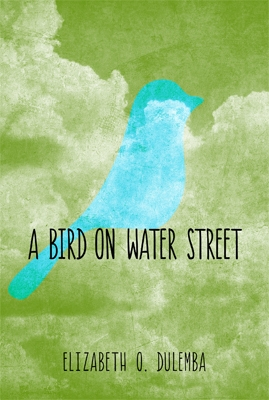A Bird on Water Street
- 2014 INDIES Finalist
- Finalist, Juvenile Fiction (Children's)
A one-company town falters, and amid the human drama, nature begins to reclaim what had been lost.
Elizabeth O. Dulemba’s illuminating historical novel, A Bird on Water Street, recounts the legacy of copper mining in Coppertown, a fictionalized version of Copperhill, an Appalachian enclave between Tennessee and Georgia. From the 1986 perspective of Jack Hicks, a teen born into a family of miners, the company, compared to a “black scab on the horizon,” is a stark counterpoint to his own desire for the majesty of trees.
Noticeably absent amid the sulfur clouds, acid rain, and erosion, trees come to symbolize a coveted life. A Bird on Water Street unfolds as a lucid, matter-of-fact account of the environmental toll wrought by the mining industry, and of Jack’s decision to search for a different future.
Also the author and illustrator of numerous children’s books, Dulemba ably captures the scarred community in grief and celebration. The languid, episodic plot includes a mining accident, mass layoffs, a bluegrass gathering, holidays, weather events, a funeral, and other moments that underscore the close-knit nature of a place dominated by one employer. Tensions between employees and management are briefly touched on, as well.
The story of Jack bristling against his father’s expectations that he, too, should become a miner unfolds against the backdrop of an extended miner’s strike, which Dulemba portrays with realistic stasis. Chapter by chapter, the effects of uncertainty wear on Jack’s family, manifesting through increasing thrift and arguments.
Despite potentially dark themes of poverty, corporate dependence, the effects of unionization, and similarly charged issues, the story remains strongly focused on Jack’s everyday family life, his friendship with Piran (the postmaster’s son), and his attention to the land. Noting, “We’d taken so much from Mother Nature. It seemed like she was just gettin’ us back,” Jack awaits change. With the company’s closure, nature begins settling back into Coppertown, resulting in an optimistic story of reclamation.
Major conflicts resolve with time and happenstance rather than through the characters’ determination. While perhaps true to life, the choice to let outside influences guide the plot leaves Jack in a state of waiting for much of the novel. Less intriguing subplots involve a teen’s pregnancy, and a town misfit’s venture in a marijuana field. Though they offer glimpses of hardship amid the otherwise gentler slices of Americana, they remain incidental.
A Bird on Water Street takes the specific problems of a lesser-known locale and deftly layers universal teenage concerns, such as the question of what kind of person to become, and what path to take. Appropriate for advanced elementary/middle school readers, the book holds crossover appeal for older teens with its attention to setting and culture. A useful author’s note provides historical context. This book is recommended as an example of hope amid bleak landscapes.
Reviewed by
Karen Rigby
Disclosure: This article is not an endorsement, but a review. The publisher of this book provided free copies of the book and paid a small fee to have their book reviewed by a professional reviewer. Foreword Reviews and Clarion Reviews make no guarantee that the publisher will receive a positive review. Foreword Magazine, Inc. is disclosing this in accordance with the Federal Trade Commission’s 16 CFR, Part 255.

